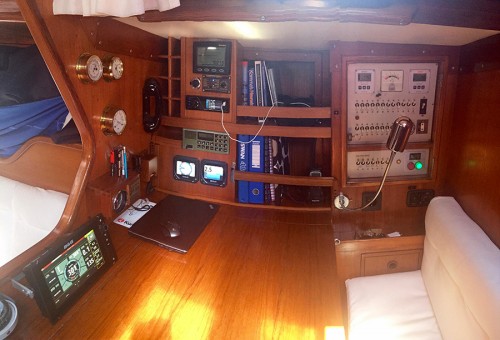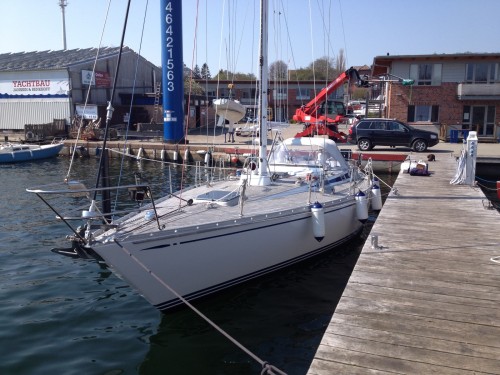Do you want to be informed on new Posts on this Thread? (members only)
| S&S Swan General - Battery management system |
|---|
|
Join Date: 17 March 2010
Posts: 48 |
||
|---|---|---|
|
Battery management system |
|
Join Date: 06 January 2012
Posts: 67 |
||
|---|---|---|
|
Hi, You've obviously made a very good choice acquiring a 431 ;)
 |
|
Join Date: 17 March 2010
Posts: 48 |
||
|---|---|---|
|
HI IHe,
|
|
Join Date: 06 January 2012
Posts: 67 |
||
|---|---|---|
|
Hello Christian, it's very delighting to hear that You've enjoyed Your fine Yacht already for decades and kept it in pristine condition!
|
|
Join Date: 17 March 2010
Posts: 48 |
||
|---|---|---|
|
HI IHe,
|
|
Join Date: 17 March 2010
Posts: 48 |
||
|---|---|---|
 |
|
Join Date: 02 February 2007
Posts: 202 |
||
|---|---|---|
|
Interesting subject indeed!
|
|
Join Date: 17 March 2010
Posts: 48 |
||
|---|---|---|
|
Thanks philippeV, interesting post!
|
|
Join Date: 17 March 2010
Posts: 48 |
||
|---|---|---|
|
Regarding your post, philippeV: I do not have a battery tester. My 5 pieces of EXIDE GEL batteries seemed to completely die within 2 hours, last autumn. At an age of 6 + 1/2 years.
|
|
Join Date: 23 October 2011
Posts: 150 |
||
|---|---|---|
|
Sprayhood.
|
|
Join Date: 17 March 2010
Posts: 48 |
||
|---|---|---|
|
Hi Matteo 45, yes I do have more photos. I will upload them to a new thread tonight, which I will start here. Then people can find it if interested.
|
|
Join Date: 02 January 2008
Posts: 1547 |
||
|---|---|---|
|
Dear Philippe
|
|
Join Date: 01 March 2007
Posts: 147 |
||
|---|---|---|
|
Dear Matteo, In answer to your question to 47 owners, we have created a larger sprayhood for the cockpit on Sarabande. The job involved fabricating a coving to receive the hoops for the hood, replacing the main track and introducing drains to the mid deck area. I wanted to create a drier cockpit!
 |
|
Join Date: 02 February 2007
Posts: 202 |
||
|---|---|---|
|
May I suggest that such different (and interesting) subjects be addressed in different posts. My best guess is that, in the future, nobody will ever be able to find information on cockpit protection in a battery management post!
|
|
Join Date: 31 January 2007
Posts: 30 |
||
|---|---|---|
|
Probably a bit late in responding to your post, but I fitted an Adverc battery management system and 3 x 105 AGM Deep cycle batteries in 2012. The batteries are still behaving very well. I fitted a Link 10 battery monitor when I bought the boat in 2004 which gives volts, amps and ampere hours consumed and it is magic! The Adverc battery management and regulator enables me to charge to batteries considerably faster than before. The Adverc system electronically fools the alternators into thinking that they need to output more current. I have two alternators, a pessimist!
|
|
Join Date: 17 March 2010
Posts: 48 |
||
|---|---|---|
|
Many thanks to all of you for your thoughts and recommendations. I learnt a lot, presently I am looking at the Votronic and at the Mastervolt systems. The Mastervolt probably has higher level software, but the advantage of the Votronic clearly is that it fits into the switch panel nicely, and also it looks good. IHe confirmed it is working OK, so that might become my choice.
|
|
Join Date: 02 February 2007
Posts: 202 |
||
|---|---|---|
|
Hello all.
|
|
Join Date: 02 February 2007
Posts: 202 |
||
|---|---|---|
|
Hello dear Swan Fans.
|
|
Join Date: 17 March 2010
Posts: 48 |
||
|---|---|---|
|
Hi philppeV,
|
|
Join Date: 17 March 2010
Posts: 48 |
||
|---|---|---|
|
... See my post above - is maybe this the aspect which should get me to buy Exide GEL batteries again? The cooking sulphuric acid below the floorboards I remember as quite a frightening experience ... |
|
Join Date: 02 January 2008
Posts: 1547 |
||
|---|---|---|
|
Dear Philippe
|
- Threads : 1701
- Posts : 10215
- Members: 820
- Online Members: 2

